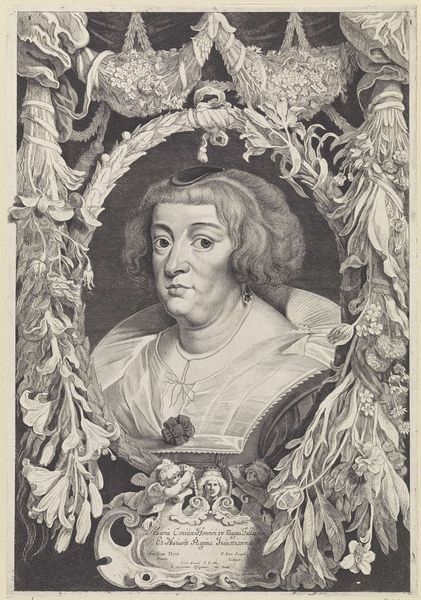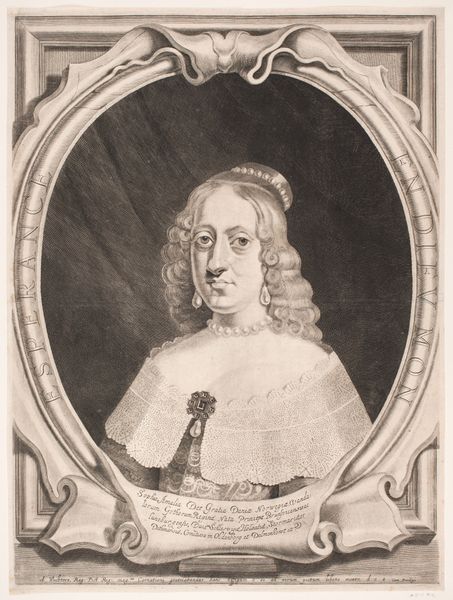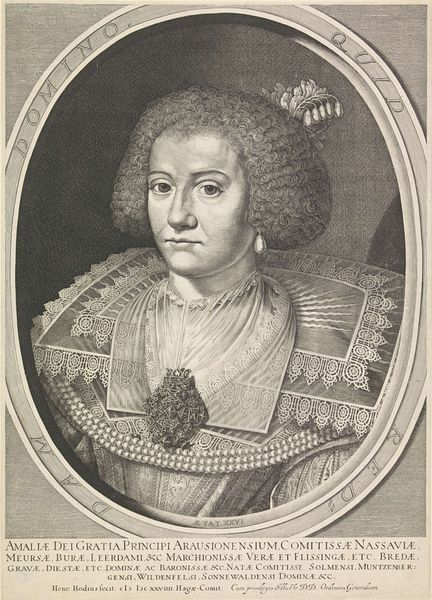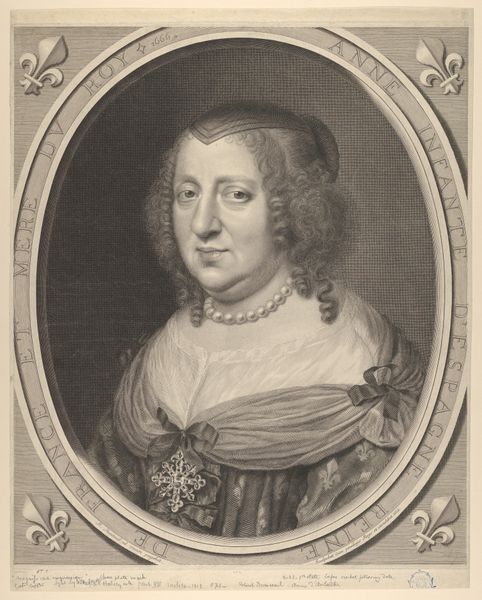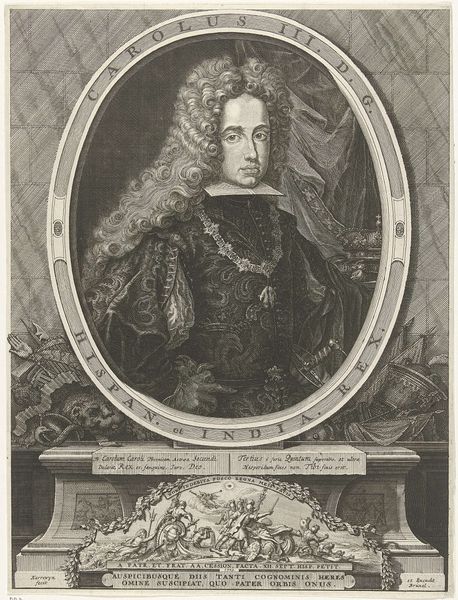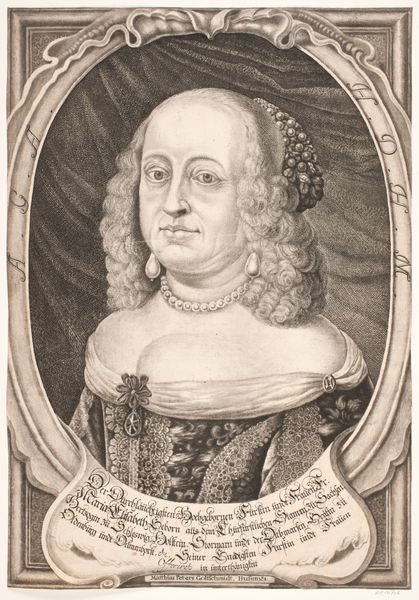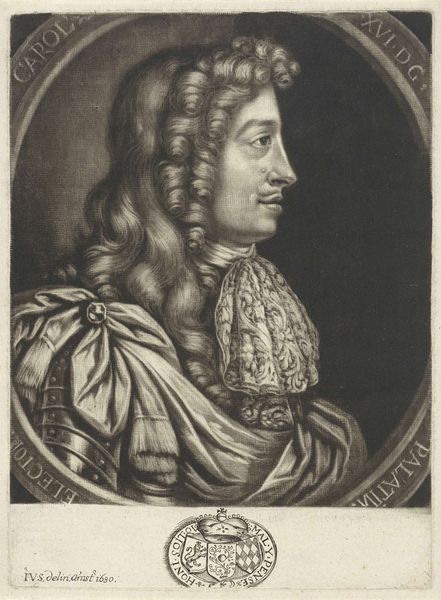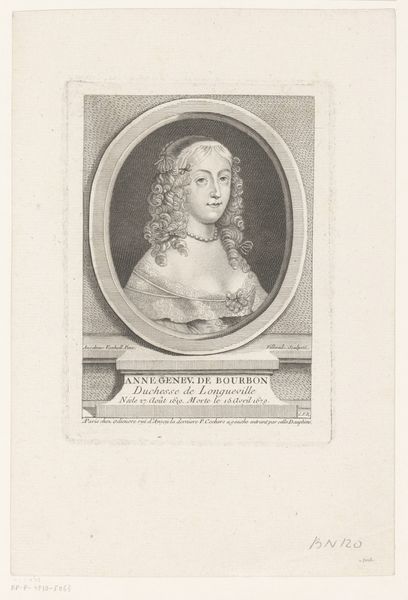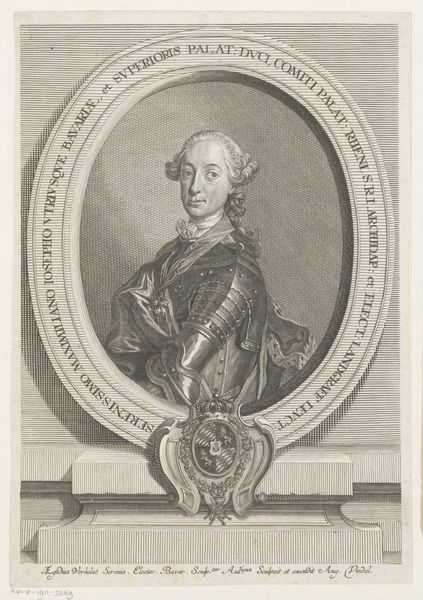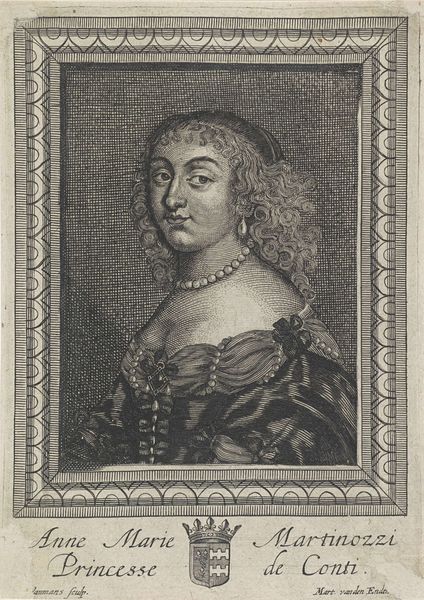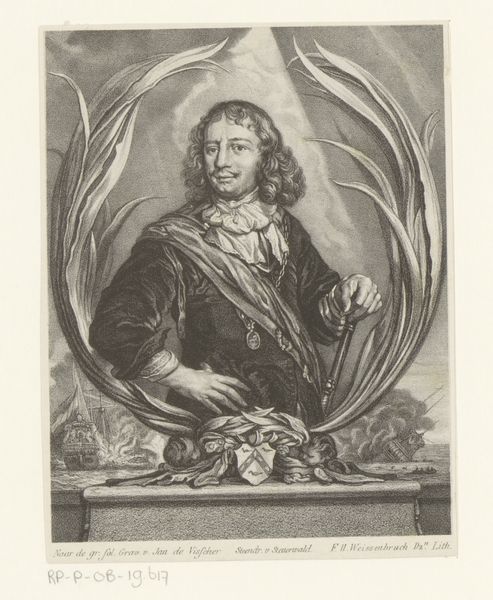
Portret van Ferdinand van Oostenrijk, landvoogd der zuidelijke Nederlanden 1644 - 1650
0:00
0:00
pietervansompel
Rijksmuseum
print, engraving
#
portrait
#
baroque
# print
#
figuration
#
engraving
Dimensions: height 408 mm, width 282 mm
Copyright: Rijks Museum: Open Domain
Curator: Looking at this print, “Portret van Ferdinand van Oostenrijk, landvoogd der zuidelijke Nederlanden,” created between 1644 and 1650 by Pieter van Sompel, now held at the Rijksmuseum, what strikes you first? Editor: It's melancholic. The monochrome rendering combined with the floral and vegetal elements, which, instead of joyfulness, look a bit like decay. This creates an immediate impression of transient beauty—something beautiful fading into history. Curator: That resonates deeply. Think about the enduring appeal of Baroque portraiture—beyond surface appearances, beyond the lace and velvet, there’s a visual language about power and its symbolic markers. It speaks about not just Ferdinand’s individual identity but his role, and what that represented during that time. Editor: Absolutely. We have to ask, though: power for whom? Consider Ferdinand's position as Governor of the Southern Netherlands. This region endured significant upheaval from Spanish Habsburg rule. Ferdinand himself embodied the suppression of local autonomy. The symbols may have told one story to the Habsburg elite, and quite another to those who were governed. Curator: I think you highlight an important point. Visual culture is often about layered interpretations, with images holding multiple meanings that shift and evolve depending on the viewer. His lace collar, his groomed moustache; it speaks to something deeper than surface appearances, about societal hierarchy made visible. Editor: But let’s remember those details of wealth and status came at a profound cost. For some, that lace wasn’t aspirational but represented their material exploitation by colonial policies enacted in Europe, including present-day Belgium. This engraver's technique almost fetishizes those textures, doesn't it? We can’t extract that artistic labor from the socio-political labor it signifies. Curator: Indeed, seeing through these layers can reveal a powerful understanding of the time. Appreciating not only the artistry, but the messages, intended and unintended, and the ways these prints can connect to current day social realities. Editor: Yes, absolutely, images from the past should compel us to interrogate their significance and impact on those living both within and outside positions of power. Let’s use images from the past to think critically and inclusively about the present.
Comments
No comments
Be the first to comment and join the conversation on the ultimate creative platform.
